매물 내화물 벽돌
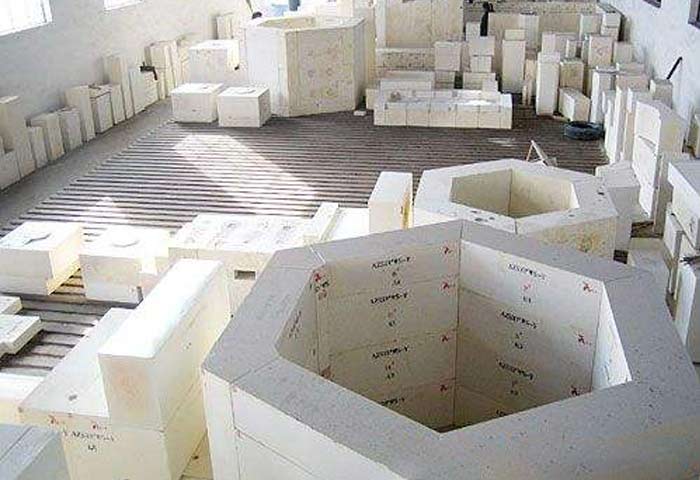
내화물 벽돌 (내화 벽돌) 내화성 점토 또는 기타 내화성 원료로 만든 내화성 재료입니다..
내화물 벽돌 (내화 벽돌) 주로 건축용 가마 및 각종 열공학 장비의 고온 건축자재 및 구조재로 사용됩니다..
고온에서 다양한 물리적, 화학적 변화와 기계적 영향을 견딜 수 있습니다..
준비과정 방법에 따라 소성벽돌로 나눌 수 있다, 벽돌을 발사하지 않음, 커패시터 턴 (융합 주조 벽돌), 내화물 단열 벽돌, 등.
PER 내화물 회사 소개
PER 내화물 회사가 생산하는 고품질 내화물 벽돌 내화 점토 벽돌을 포함하여, 높은 반토 다루기 힘든 벽돌, 다루기 힘든 실리카 벽돌, 마그네시아 다루기 힘든 벽돌, 멀라이트 벽돌, 그리고 단열벽돌, 등.
그 동안에, 내화 벽돌 제품에 관심이 있으시면, 또는 화로나 가마를 지을 계획이라면, 당신은 우리에게 연락할 수 있습니다! 전문적인 조언과 경쟁력 있는 가격으로 신속하게 답변해 드리겠습니다.!
세 가지 측면으로 인해 내화 벽돌이 고온에 잘 견디게 됩니다.
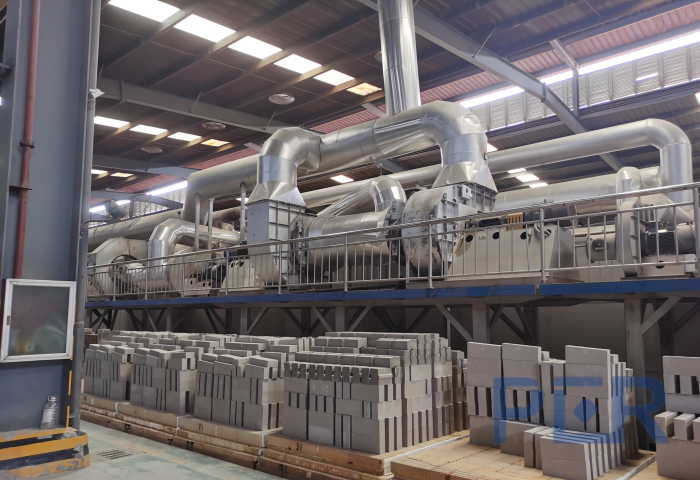
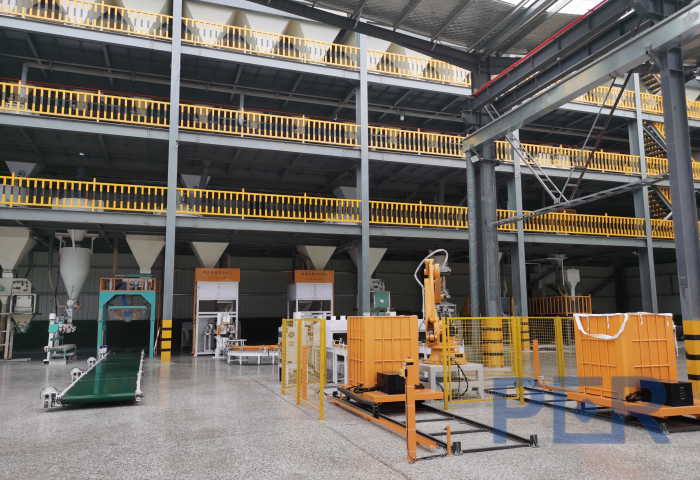
PER 내화물 회사의 다년간의 제조 경험 요약: 내화 벽돌의 고온 저항 이유.
1. 내화 내화 벽돌에 사용되는 원료 광물의 높은 내화도.
2. 무기 비금속재료는 원자재 수준에 따라 그 사용정도가 결정되므로.
3. 완성된 빌렛은 고온 터널 가마에서 1500°c 이상의 고온에 노출됩니다., 따라서 내화 벽돌은 고온에 견딜 수 있으며 고온로 라이닝에 적합합니다..
내화 벽돌 유형에 대한 가장 완전한 정보

내화벽돌은 구성성분에 따라 크게 5가지로 분류할 수 있습니다.: 실리카 알루미나 내화물 벽돌, 알칼리성 시리즈 다루기 힘든 벽돌, 탄소 함유 내화 벽돌, 지르코늄 함유 내화 벽돌, 및 단열 내화물 벽돌. 모든 용광로는 단지 한 종류의 내화 벽돌과 벽돌이 아닙니다., 사용하려면 서로 다른 내화물 벽돌이 필요합니다..
1. 실리카-알루미나 내화물 벽돌
실리카-알루미늄 내화 벽돌은 AL2O3-SiO2 이원계 단계 다이어그램의 기본 이론을 기반으로 합니다., 주로 다음을 포함.
1.1 실리카 내화물 벽돌 — SiO293% 이상을 함유한 내화벽돌을 말하며 산성내화벽돌의 대표적인 품종입니다.. 그것은 벽돌 코크스 오븐에 주로 사용됩니다., 다양한 유리에도 사용됩니다., 세트, 탄소 소성로, 금고의 내화 벽돌, 그리고 미시시피 로드(Mississippi Road)의 화기 작업의 기타 하중 지지 부분. 하지만 다음 용도로는 적합하지 않습니다. 600 열 장비의 ℃ 및 온도 변동.
1.2 점토 내화물 벽돌 — 점토벽돌은 주로 멀라이트(mullite)를 함유하고 있다. (25% 에게 50%), 유리상 (25% 에게 60%), 정사각형 석영과 석영 (최대 30%) 로 구성. 주로 용광로에 사용됩니다., 뜨거운 용광로, 가열로, 전력 보일러, 석회 가마, 회전식 가마, 세라믹, 내화물 벽돌 소성 가마.
1.3 고 알루미나 내화물 벽돌 — 고알루미나 벽돌의 미네랄 성분은 커런덤입니다., 물라이트, 및 유리상. 그 함량은 AL2O3/SiO2 비율과 불순물의 종류와 양에 따라 달라집니다.. 고알루미나 벽돌 제품에는 용융 주조 벽돌이 포함됩니다., 융합된 입상 벽돌, 소성되지 않은 벽돌, 그리고 형태가 없는 내화 벽돌. 고알루미나 내화 벽돌은 철강 산업에서 널리 사용됩니다., 비철금속 산업, 및 기타 산업.
1.4 커런덤 내화물 벽돌 — 강옥 벽돌은 다음의 AL2O3 함량을 나타냅니다. 90%, 내화물 벽돌의 주요 단계인 커런덤. 소결된 커런덤 벽돌과 전기융합된 커런덤 벽돌로 나눌 수 있습니다.. 2.
2. 알칼리성 시리즈 내화물 벽돌
알칼리 내화 벽돌은 알칼리 산화물을 함유한 내화 제품입니다. (Mg0 및 CaO) 주요 구성 요소로. 주요 품종은 다음과 같습니다.
2.1 마그네시아 내화물 벽돌 — 마그네시아 벽돌은 마그네사이트를 주요 결정상으로 하는 원료인 마그네사이트입니다., MgO 함량 80% 에게 85% 내화물 벽돌 이상. 주요 제품은 마틴 샌드입니다., 일반 야금 마그네슘 모래, 일반 마그네슘 벽돌, 마그네슘 실리콘 벽돌, 마그네슘 알루미늄 벽돌, 마그네슘 칼슘 벽돌, 마그네슘 탄소 벽돌, 그리고 다른 품종. 마그네시아 내화물 벽돌은 주로 평면로에 사용됩니다., 산소 변환기, 전기로, 비철금속 제련, 등.
2.2 백운석 벽돌 — 백운석 벽돌은 백운석을 주원료로 하여 생산되는 일종의 알칼리 내화물 벽돌입니다.. 알칼리 변환기에 널리 사용됨, 또한 패키지의 일부 정제 라이닝에도 사용할 수 있습니다..
2.3 마그네시아 감람석 내화물 벽돌 — 마그네시아 감람석 다루기 힘든 벽돌, 내화물 벽돌의 주성분인 마그네시아 감람석 2MgO-SiO2입니다.. 주로 평로 축적 챔버 격자 벽돌에 사용됩니다., 잉곳 주조용 벽돌, 가열로 바닥, 구리 정제로는 또한 좋은 사용 효과가 있습니다.
3. 탄소 함유 내화 벽돌
탄소 함유 내화 벽돌은 탄소 또는 탄소 화합물로 만들어집니다.. 주요 품종은 다음과 같습니다.
3.1 탄소질 내화물 벽돌 — 탄소질 내화벽돌은 탄소질 재료를 주원료로 하여 만들어진 벽돌입니다., 고온 저항성 중성 내화 벽돌 제품으로 만들어진 결합제를 적당량 첨가. 탄소질 내화 벽돌은 전기화학 산업에서 널리 사용됩니다., 화학 산업, 석유 화학 산업, 전기도금 산업, 합금철 공업로, 산, 알칼리 탱크 라이닝 및 파이프라인, 비철금속 제련용 용광로 라이닝 (납과 같은, 알류미늄, 주석, 등.).
3.2 흑연 내화 제품 — 흑연 내화물은 천연 흑연을 원료로 만들어집니다., 점토를 결합제 내화물로 사용. 가장 많이 생산되고 널리 사용되는 것 중 하나는 제강 및 비철금속 제련용 흑연점토 도가니입니다..
3.3 실리콘 카바이드 내화 제품 — 실리콘 카바이드 내화물 탄화규소로 생산된 고급 내화재료입니다. (SiC) 원료로. 내마모성과 내식성이 우수합니다., 고온의 가벼움, 높은 열전도율, 작은 선팽창 계수, 그리고 좋은 열충격 저항. 화학산업에서는, 주로 석유 및 가스 발전기에 사용됩니다., 유기 폐기물 하소기, 석유 가스화기, 탈황로. 게다가, 우주 기술 분야에서, 로켓 노즐 및 고온 가스 터빈 블레이드로 사용할 수 있습니다., 등.
4. 지르코늄 함유 내화 벽돌
지르코늄 함유 내화 벽돌은 일종의 산성 물질에 속합니다.. 천연 석영사로 만든 제품입니다 (ZrSiO2) 원료로.
지르코늄 내화 벽돌은 실리카-알루미나 내화 벽돌 및 탄소 함유 시리즈 내화 벽돌과 다릅니다., 슬래그 저항성이 좋은 것, 그리고 작은 열팽창률.
온도가 증가하면 열전도율이 감소합니다., 높은 부하 연화 온도, 높은 마모 강도, 그리고 좋은 열충격 저항.
이제는 다양한 산업분야에서 중요한 소재가 되었습니다.. 야금 산업의 연속 주조 및 진공 탈기 기술 개발로.
지르콘 내화 벽돌은 점점 더 널리 사용됩니다., 주로 다음과 같은 분류가 있습니다.
4.1 지르콘 벽돌 — 지르콘 벽돌은 제강 공정에 사용됩니다., 철외 가스 제거 방법을 사용하여, 용융 슬래그에 대한 지르콘 내화물, 강철 침식 저항, 그리고 열충격에 대한 저항력이 좋습니다., 감압 작업에 적합합니다.. 지르코니아 내화 벽돌은 산성 슬래그와 유리에 대한 저항성이 높기 때문에 활성도가 가장 높은 유리가 녹는 유리 가마의 심하게 손상된 부분에도 널리 사용됩니다.. 지르콘 내화물은 금속 알루미늄이 침투하지 않는 특성도 가지고 있습니다., 알루미늄 산화물, 그리고 그들의 슬래그, 따라서 알루미늄 정제 노 바닥에서도 좋은 결과를 얻었습니다..
4.2 AZS 전기융착 벽돌 — AZS 전기융합 벽돌, 전기융합 지르코니아 커런덤 벽돌로도 알려져 있음, 유리산업의 발전과 함께, AZS 전기융합 벽돌은 유리 가마 필수 내화물의 핵심 부품이 되었습니다.. 유리액의 침식에 더 강합니다..
4.3 지르코늄 멀라이트 전기융합 벽돌 — 지르코늄 멀라이트 전기융합 벽돌, 이런 종류의 벽돌은 치밀한 결정 구조가 특징입니다., 높은 부하 연화 온도, 그리고 열충격에 대한 저항력이 좋습니다.. 상온 및 고온에서 높은 기계적 강도를 가짐, 좋은 내마모성, 좋은 열 전도성, 슬래그 침식에 대한 저항성이 우수합니다.. 이런 종류의 제품의 사용 범위는 넓습니다, 야금 가열로에 사용, 심지어 가열로, 탄화칼슘로 콘센트, 유리 가마 벽, 등., 매우 좋은 결과를 사용.
5. 단열 내화물 벽돌
단열 내화물 벽돌. 다공성이 높은 내화물입니다., 낮은 부피 밀도, 열전도율이 낮고. 단열 내화물은 경량 내화물이라고도 합니다.. 여기에는 다음과 같은 분류가 포함됩니다..
5.1 고알루미나 단열 경량 내화물 벽돌 — 고 알루미나 단열 경량 내화물 벽돌은 보크사이트를 주요 AL2O3 함량으로 포함하는 단열 경량 내화 벽돌입니다. 48%. 고알루미나 단열 경량 내화 벽돌은 조적 단열층에 사용할 수 있으며 부품의 강렬한 고온 용융 재료 침식 및 정련 효과가 없습니다.. 불꽃에 직접 닿았을 때, 일반 고알루미나 단열 내화물 벽돌의 표면 접촉 온도는 1350℃보다 높지 않아야 합니다.. 멀라이트 단열 내화물 벽돌은 화염과 직접 접촉할 수 있으며 고온 저항 특성을 갖습니다., 고강도, 그리고 놀라운 에너지 절약 효과. 열분해로 라이닝에 적합합니다., 열기로, 세라믹 롤러 가마, 전기 도자기 서랍 가마, 및 다양한 저항로.
5.2 점토 단열 경량 내화물 벽돌 — 점토 단열 경량 내화 벽돌은 AL2O3 함량의 주요 원료로 내화물 점토로 만들어집니다. 30% ~ 48% 단열 내화물 벽돌. 생산 공정은 번아웃 플러스 캐릭터 방식과 폼 방식을 채택합니다.. 내화물 점토, 드리프트 비즈, 및 내화물 점토 클링커를 원료로 사용, 결합제와 톱밥을 섞은 것, 일괄 처리 후, 혼입, 조형, 건조, 그리고 발사, 대량 밀도를 생산하기 위해 0. 3 ~ 1. 5g/cm3 제품. 점토 단열 벽돌의 생산은 단열 내화 벽돌 전체 생산량의 절반 이상을 차지합니다..
5.3 규조토 단열 경량 내화물 벽돌 — 규조토 단열 경량 내화 벽돌은 규조토를 주원료로 한 단열 내화 제품입니다.. 주로 900℃ 이하의 단열층에 사용됩니다..
5.4 드리프트 비드 벽돌—드리프트 비드 벽돌, 드리프트비드(Drift Bead)를 주원료로 하는 단열 내화물입니다.. 드리프트 비드는 화력발전소의 비산회에서 떠다니는 알루미노실리케이트 유리의 중공 비드입니다.. 빛이다, 벽이 얇은, 구멍, 매끄러운 표면, 고온 내성, 그리고 단열 성능도 좋고. 이러한 드리프트비드의 우수한 특성을 이용하여, 보온성이 뛰어난 경량의 단열 내화물을 만들 수 있습니다.. 드리프트 비드 벽돌의 생산은 반건식 성형이 가능합니다..
내화벽돌의 성능
내화 내화 벽돌은 1580℃ 이상의 내화물을 함유한 무기 비금속 재료입니다., 고온기술을 제공하는 기초소재인.
조적가마 및 기타 열 설비의 구조재입니다..
특정 고온용기 및 부품을 제조하거나 특수한 역할을 하는 기능성 소재이기도 합니다..
내화 벽돌은 좋은 조직 구조를 가져야 합니다., 열적 특성, 기계적 성질, 고온의 작용 하에서 성공적인 사용을 위한 특성을 사용합니다..
그건, 내화물 함량이 높다, 부하 연화 온도, 열 충격 저항, 화학적 침식 및 기타 특성에 대한 저항성.
이런 식으로, 다양한 물리적, 화학적 변화의 영향을 견딜 수 있으며 열 장비 및 구성 요소 사용 요구 사항을 충족할 수 있습니다..
PER 내화물 회사 소개
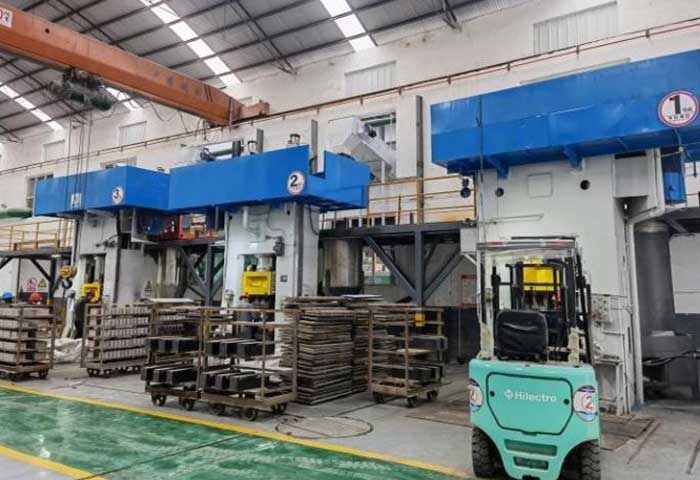
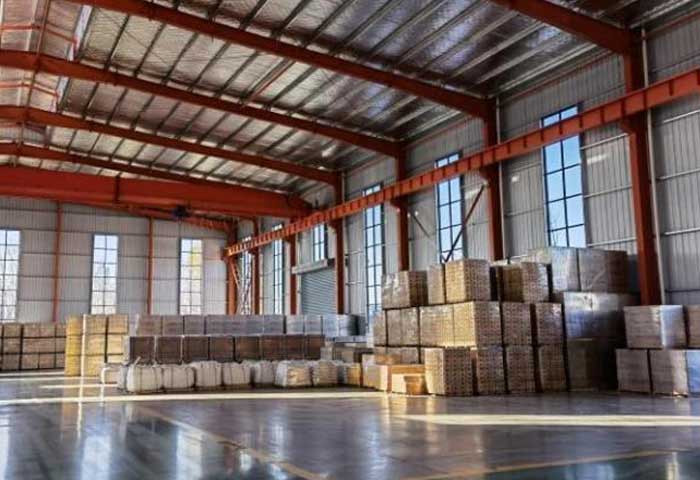
PER 내화물 회사 신미시에 위치, 허난성, 중국 내화물의 고향. 저희 회사는 R을 접목한 기술 기반의 내화물 기업입니다.&디, 생산, 매상, 및 기술 서비스. 국토의 풍부한 자원과 우수한 품질은 내화재 생산에 비할 데 없이 우수한 조건을 제공합니다.. 우리의 주요 제품은 다루기 힘든 점토 벽돌, 높은 반토 다루기 힘든 벽돌, 다루기 힘든 실리카 벽돌, 마그네슘 다루기 힘든 벽돌, 멀라이트 벽돌, 단열벽돌, 및 기타 고온 내성 제품.
회사소개 PER 내화물은 그린의 생산기지입니다., 에너지 절약, 친환경 신내화물. 우리 회사는 ISO9001을 통과했습니다.:2008 국제 품질 시스템 인증 및 GB/T24001-2004 / ISO14001:2004 환경 경영 시스템 인증, 기업품질 검사기관 인증. 우리의 제품은 이상에서 잘 판매됩니다 20 전 세계 국가. 그들은 야금술을 위한 선호하는 내화 제품입니다, 비철, 석유화학, 유리, 세라믹, 및 기타 내화물 산업.
